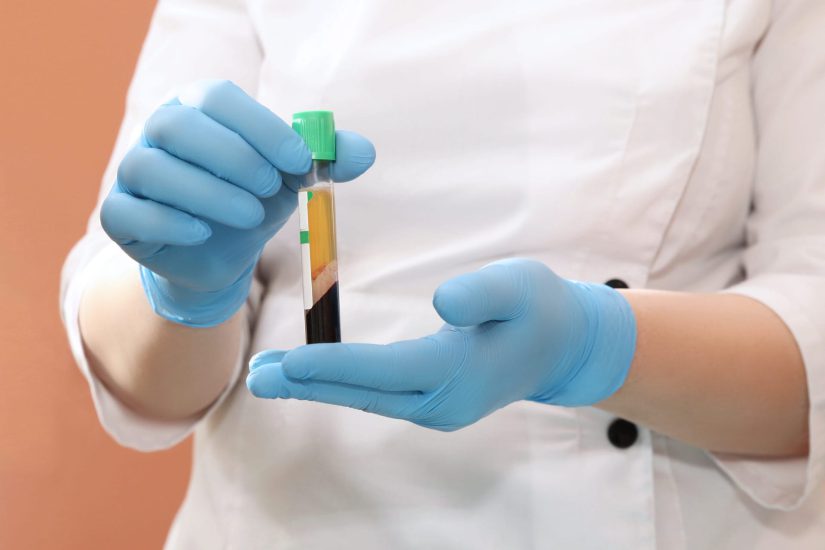Platelet-Rich Plasma Therapy
One of the latest trends being explored by medical science is regenerative medicine. The human body possesses the fantastic ability of self-healing, and many new therapies are focused on harnessing this ability.
Platelet-rich plasma (PRP) injections have gained a lot of attention in recent years, especially due to their use in acute sports injuries and to speed up the post-surgical healing process. Moreover, PRP therapy is gaining more and more attention as a cosmetic procedure for rejuvenating skin and preventing hair loss.
But there are still many questions related to the PRP treatment. We will try to answer a couple of them, but if you require more details about PRP shots, don’t hesitate to contact our doctors at Ceda Orthopedic Group.
What Is Platelet-Rich Plasma (PRP)?

To better understand what platelet-rich plasma (PRP) is, we need to consider the blood’s composition. Blood is a liquid (known as plasma) containing small solid particles such as red blood cells, white blood cells, and platelets. These platelets have an essential role in clotting blood and healing injuries.
PRP is plasma that has more platelets than are usually found in the blood. Due to the higher number of platelets, the concentration of the proteins known as growth factors is also high. The role of these proteins is to enhance wound healing.
The PRP preparation process starts with blood drawn from the patient. Following the blood extraction, the platelets are separated by the other solid components through centrifugation. By injecting these platelets in the injured area, they immediately start to produce growth factor proteins that heal the damaged tissue.
What are PRP Injections?
After the plasma platelets are extracted from the patient’s blood, the doctor will prepare the solution for the injection. It is important to note that not all PRP injections are the same. The concentration of platelet-rich plasma depends on the concentration of platelets and white blood cells, and the use of additives.
The PRP injection targets injuries such as a torn tendon, a knee sprain, or a pulled hamstring muscle. Before performing the injection, the area is anesthetized, and some doctors might use ultrasound to locate the injury more accurately. Once the platelets reach the targeted area, they release growth factors that enhance the cells’ repair and renewal.
What Can PRP Treat?
Since its development, platelet-rich plasma treatment has been used in many medical disciplines, from musculoskeletal pain and injuries to cosmetic procedures. Below we will discuss some of the applications of this relatively new therapy.
Acute Ligament, Joint, and Muscle Injuries
Due to the use of platelet-rich plasma (PRP) injections in treating acute ligament and muscle injuries in athletes, it gained a lot of publicity. PRP injections have good results in treating pulled hamstring muscles and thigh and knee sprains.
Chronic and Acute Tendon Injuries
PRP injections have proven effective in treating acute and chronic tendon injuries such as tennis elbow, jumper’s knee (inflammation of the patellar tendon), or degenerative tendinopathies (Achilles tendinosis). Many famous athletes include PRP treatments in their post-injury physical therapy.
Augmentation For Surgery
One of the recent applications of platelet-rich plasma injections is orthopedic surgery. Sometimes orthopaedic surgeons use PRP after surgery to repair torn ligaments such as anterior cruciate ligament or tendons like the rotator cuff tendon in the shoulder.
Apart from orthopedic surgery, platelet-rich plasma injections are widely used by plastic surgeons to heal wounds after cosmetic procedures, by dentists in tooth extractions and periodontal surgery, or by ophthalmologists to heal eye injuries.
Arthritis
According to various studies, PRP injections effectively reduce pain caused by osteoarthritis, especially knee arthritis. However, the efficiency of this treatment depends on a series of factors such as the patient’s overall health, the stage of the condition, or how the body responds to the treatment.
Nevertheless, PRP injections remain a better alternative to invasive surgery or enduring pain. Recent studies have also proven that PRP therapy is more efficient than traditional hyaluronic acid injections.
Fractures
Although PRP injections are not widely used for treating fractures, they have shown progress in speeding up the healing of broken bones. Also, a PRP injection may have better results than traditional therapies in regenerating cartilage.
Dermatological Application
One of the most well-known applications of PRP injections is the treatment of male pattern baldness and women’s hair loss due to alopecia by boosting hair growth.
Also, PRP treatment is famous for rejuvenating skin by replacing dead skin cells with new ones. Apart from reducing wrinkles, this therapy is efficient in treating scars.
How Long Does Platelet-Rich Plasma Therapy Last?
The answer to this question depends on some factors like the patient’s overall health and how advanced their medical condition is. However, clinical studies have shown that the efficacy of a PRP injection can last up to nine months.
Many patients suffering from osteoarthritis reported symptom improvement after one week. Moreover, this improvement lasted for six months. The use of periodic PRP injections increased the treatment’s efficacy.
It is important to remember that a complex or more severe orthopedic condition is likely to decrease the treatment’s efficiency.
Does PRP Therapy Have Side Effects?
Since platelet-rich plasma treatment involves injecting a substance into the skin, side effects may be experienced by some patients.
However, since the injected substance comes from the body, the risk of an allergic reaction is significantly reduced. Nevertheless, since the procedure involves blood draws, there might be some bruising and soreness at the injection site.
Other less common side effects of PRP injections are:
- Tissue damage
- Bleeding
- Infection
- Nerve injury
It is very important to speak to your doctor about the risks and benefits of the procedure beforehand. The specialist will answer any query you might have. For more information about this special surgery, contact us at (305)646-9644 and schedule a visit or consultation. Our expert physicians specialize in orthopedic care, diagnostics, neurosurgical care, interventional pain medicine, and chiropractic medicine. We will do our best to explain all the processes, help you while you heal, and get you back on your feet! Contact us today to learn more about platelet-rich plasma therapy.
FAQ
Yes, however, during the first days after the procedure, it is recommended to protect the affected area and avoid discomfort. If you received a PRP injection in your knee, ankle, or foot, you might need to use crutches. Starting with the second week, you will resume more and more physical activities, but you still need to avoid extreme effort or activities that cause pain.
Following your doctor’s recommendation will shorten the healing time, and the procedure will return better results.
PRP treatment is a low-risk and safe procedure that does not cause significant side effects.
However, since the procedure involves a blood draw, you need to properly hydrate and eat to avoid feeling dizzy. Other risks are associated with the way your blood is handled after the draw, and it needs to be kept sterile to prevent any infections.
To summarize, as long as you follow the doctor’s recommendation and the procedure is performed in a professional medical environment, no significant side effects or risks will be experienced.
Typically, PRP injections are not painful. Even though the substance is injected directly into the affected area, a local anesthetic is applied beforehand.
However, depending on which part of the body the PRP injection is applied, you might experience mild discomfort. For example, minimal discomfort follows PRP injections into the joints.
It is essential not to use anti-inflammatory drugs after the procedure because they will impede the healing process.
